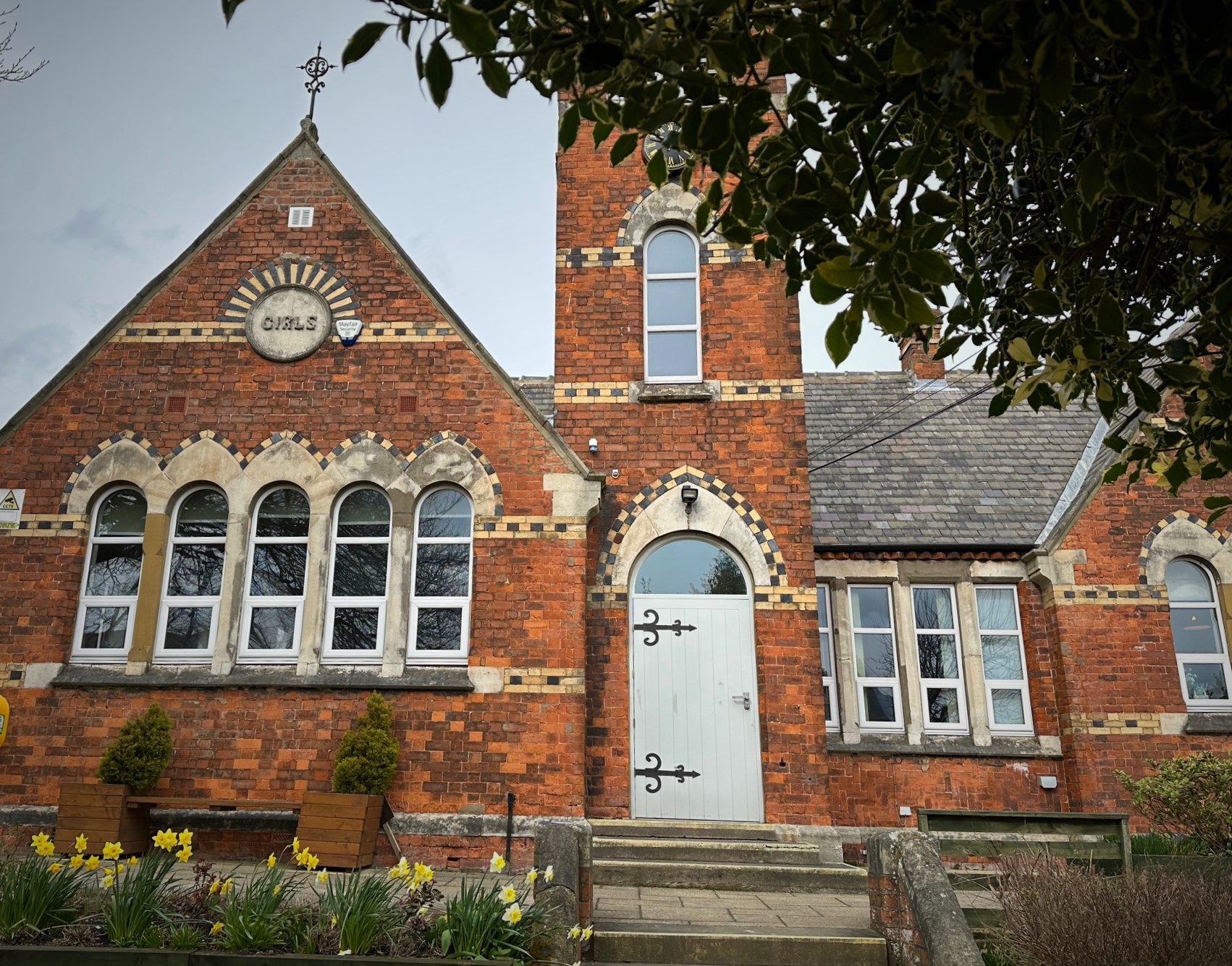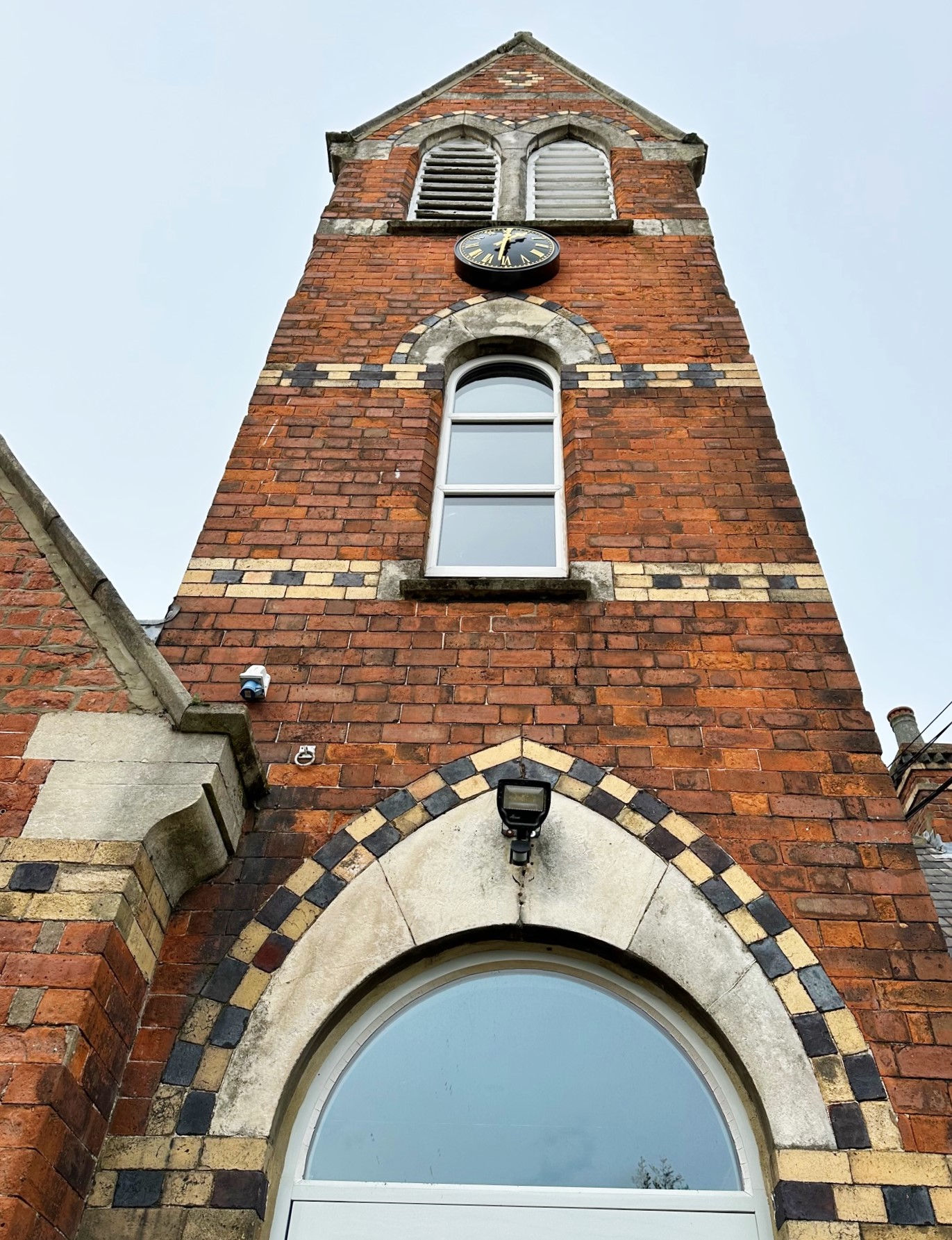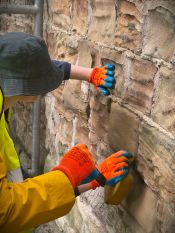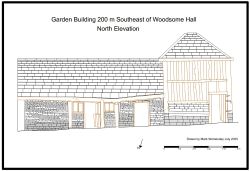Today we were providing advice on re-pointing at The Old Girls School Community Centre, Sherburn in Elmete.
Today we were providing advice on re-pointing at The Old Girls School Community Centre, Sherburn in Elmete.
The appearance of your fine brick building, with its structural polychromies of yellow and black bricks in a sea of red, with very fine joints and stone dressings, owes much of its character to the fine mortar joints. Unsuitable repointing can affect not only the look but also the durability of brick work, as you have seen with areas of previous cement re-pointing and is amongst the most frequent causes of damage to the character and fabric of historic buildings. The comprehensive repointing of the whole building is not necessary, only those parts that are most exposed to the weather or have been affected by leaking rainwater pipes or gutters or excessive water runoff from above.

Once areas of defective pointing have been identified they can be carefully raked out manually using a hand-held saw blade. To a depth to remove all loose material, to at least twice the height of the joint, or 25 mm back, whichever is deeper. It is important that mortar is removed from the top and bottom of the joints leaving a square-cut joint. Dust and debris must be removed from the joints using brushes and thoroughly rinsed with water so that no loose dry material is left. The masonry must be thoroughly dampened with a hosepipe with a spray nozzle or a pump-action water sprayer, before placing the mortar. This is to reduce suction, improve adhesion of the mortar and prevent the mortar from drying too quickly.

It is suggested that a pointing mix of one part Ionic NHL 2 to one part silica sand be used on the tightly jointed brickwork, and elsewhere we would suggest a mix of one part Ionic NHL 2 to 1 ½ parts silica sand and ½ part Nosterfield sand. Both mixes should be left to stand for 30 minutes before use.
Related Articles

The steps members of the Waterton’s Wall restoration team, with support from Mark Womersley, have been following to consolidate, conserve and repair this historic wall that represents the successful efforts of Charles Waterton to preserve the wildlife that lived on his estate near Wakefield in West Yorkshire.
1. Fill deep voids behind the wall’s facing stones with deep pointing work. The works involve …

Mark spent a day recording a historic timber-framed garden building at Woodsome Hall
Mark Womersley, as part of his voluntary work with the Yorkshire Vernacular Buildings Study Group, spent…

M Womersleys were delighted to offer a day of tutoring to those who attended the Wentworth Woodhouse Working Party
M Womersleys were delighted to offer a day of tutoring to those who attended the Wentworth Woodhouse…